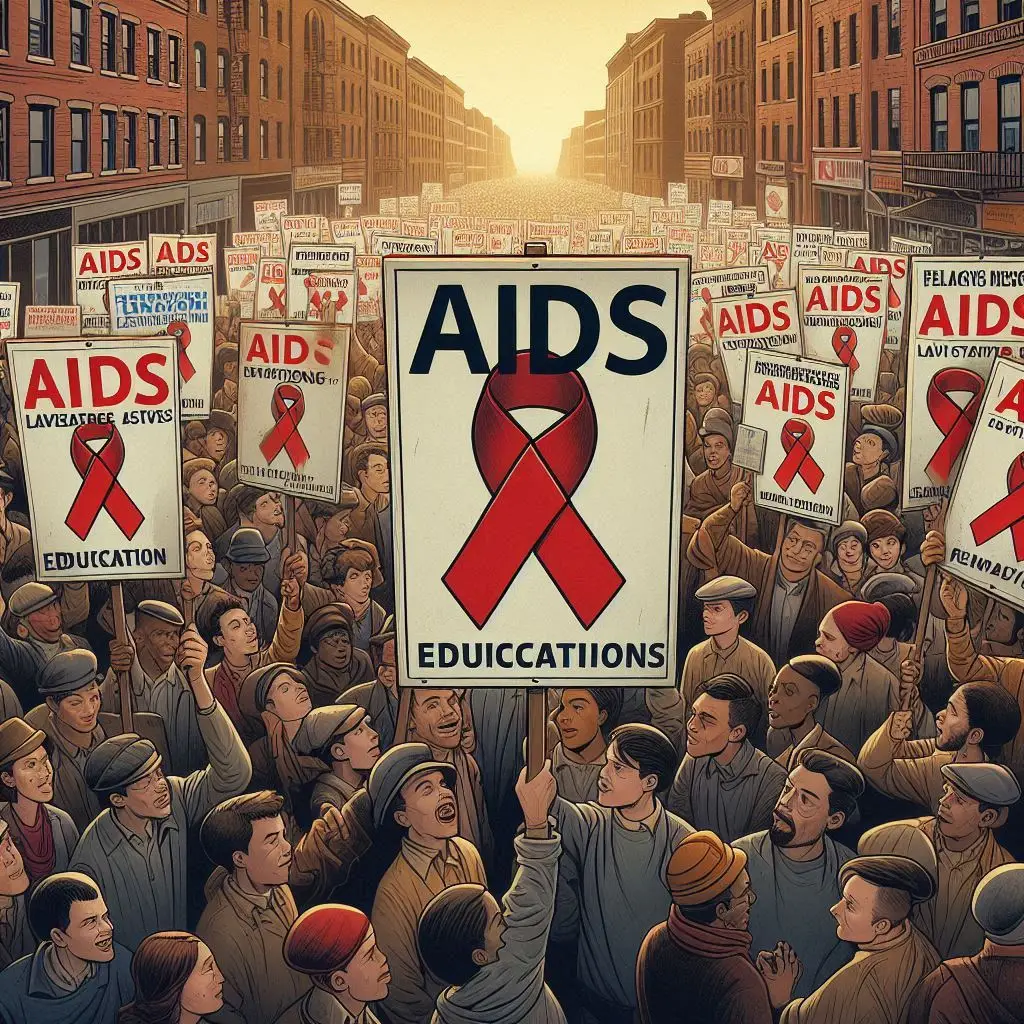From whispered rumors to televised PSAs, the story of AIDS education campaigns is one of evolving clarity and courage. In the early days of the epidemic, the world was caught in a storm of confusion, fear, and misinformation. As the virus spread, so did panic—but not knowledge. One question hovered at the center of the public’s uncertainty: “Where did AIDS come from?” The way governments, health organizations, and media campaigns answered—or failed to answer—that question shaped public understanding for decades.

The Early Silence and the Cost of Delay
When AIDS emerged in the early 1980s, it was shrouded in mystery. Cases began appearing primarily among gay men in the United States, and the disease was initially labeled as “GRID” (Gay-Related Immune Deficiency). Public health messaging was slow and timid, largely due to the stigma surrounding the affected communities.
At that point, very few people were asking scientifically grounded questions like “Where did AIDS come from?” Most early campaigns avoided discussing the origin altogether, either due to lack of knowledge or fear of social backlash. This vacuum allowed myths to thrive, with many believing AIDS was a punishment or a conspiracy rather than a medical issue. The silence was deadly.

The Rise of Bold Campaigns
As the death toll mounted and awareness grew, the 1980s and early 1990s saw the launch of more assertive education campaigns.
One of the most notable efforts came from the United Kingdom in 1986. The “Don’t Die of Ignorance” campaign used stark television ads and leaflets sent to every home in Britain. These ads did not shy away from stating the facts, including how AIDS is transmitted—and more importantly, how it isn’t.
Though this campaign focused more on prevention than on answering “where did AIDS come from?”, it marked a turning point in the tone of AIDS education: direct, urgent, and based on science.
Answering the Origin: Where Did AIDS Come From?
Eventually, as public education matured, so did the messaging around the origins of HIV/AIDS. Campaigns began to incorporate answers to the question “Where did AIDS come from?” using accessible language.
Educational materials explained that AIDS is caused by HIV (Human Immunodeficiency Virus), which likely originated from a cross-species transmission of SIV (Simian Immunodeficiency Virus) found in chimpanzees. This zoonotic event occurred when hunters in Central Africa were exposed to infected animal blood, most likely during the early 20th century. The virus gradually adapted to humans, evolving into what we now know as HIV.
Clarifying the natural origin of the virus helped to debunk harmful conspiracy theories and redirected focus toward treatment and prevention rather than blame and fear.
The Global Push for Prevention
As the epidemic went global, so did the messaging. Campaigns tailored their tone and content to regional cultures and concerns. In Africa, where heterosexual transmission was predominant, campaigns emphasized condom use, fidelity, and regular testing. In the U.S., organizations like the CDC and WHO released widely distributed posters, videos, and school programs focused on safer sex, needle exchange, and destigmatization.
The famous U.S. While not every campaign tackled “Where did AIDS come from?” head-on, many included scientific infographics and FAQs that educated millions on the virus’s natural origin.
Modern Messaging and the Digital Era
Today, AIDS education campaigns have moved into the digital space. Social media, mobile apps, and influencer partnerships help reach younger audiences. Campaigns like #UequalsU (Undetectable = Untransmittable) and World AIDS Day use data, storytelling, and community leadership to inspire action.
Importantly, modern campaigns no longer hesitate to answer “Where did AIDS come from?” accurately. They present the origin story not as a mystery or controversy, but as a known fact rooted in decades of scientific research. This helps combat lingering myths and reinforces trust in healthcare.
From Misinformation to Empowerment
Early missteps cost lives, but bold public health messages eventually helped turn the tide. By confronting difficult questions like “Where did AIDS come from?”, these campaigns have replaced fear with facts and silence with solutions.
In reviewing their history, one truth stands out: education is not just about telling people what to avoid. It’s about giving them the knowledge to protect, to understand, and to act. And in the battle against AIDS, knowledge—shared widely and truthfully—is the most powerful medicine of all.Tools


